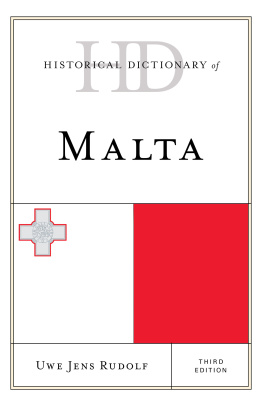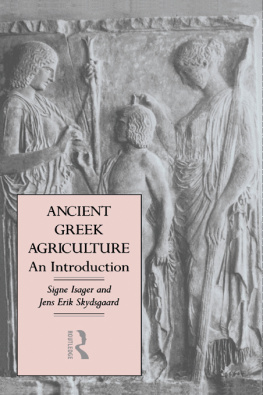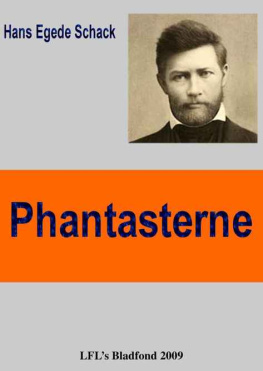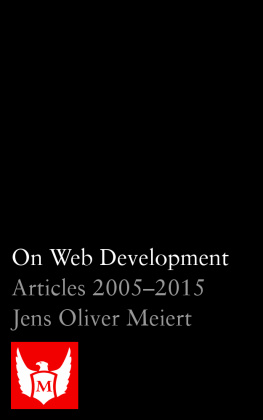Table of Contents
Titles in This Series
THE CHUMASH
THE ESSELEN
THE LUISEO
THE MIWOK
THE MODOC
THE MOHAVE
THE MONO
THE OHLONE
THE POMO
THE SHASTA
THE SHOSHONI
THE TONGVA
ROSEN / PowerKids Press
ISBN: 9781538324691
6-pack ISBN: 9781508162865
GRL: S
THE MIWOK
JENS HAAKONSEN
Spotlight on the American Indians of California
MIWOK
THE
JENS HAAKONSEN
New York
JENS HAAKONSEN
MIWOK
THE
Spotlight on the American Indians of California
Published in 2018 by The Rosen Publishing Group, Inc.
29 East 21st Street, New York, NY 10010
Copyright 2018 by The Rosen Publishing Group, Inc.
All rights reserved. No part of this book may be reproduced in any form without permission in writing from the
publisher, except by a reviewer.
Editor: Theresa Morlock
Book Design: Michael Flynn
Interior Layout: Reann Nye
Photo Credits: Cover Thomas Hallstein/Alamy Stock Photo; p. 5 Ted Soqui/Corbis Historical/Getty Images; p. 6 cdrin/
Shutterstock.com; p. 7 Galina Barskaya/Shutterstock.com; pp. 9, 13, 17 Jeffrey B. Banke/Shutterstock.com;
p. 11 Kippy Spilker/Shutterstock.com; p. 15 dirkr/Shutterstock.com; pp. 19, 23 Courtesy of the Library of Congress;
p. 20 Marilyn Angel Wynn/Nativestock/Getty Images; p. 21 https://commons.wikimedia.org/wiki/File:Miwok-Paiute_
ceremony_in_1872_at_current_site_of_Yosemite_Lodge.jpeg; p. 25 Andrew Zarivny/Shutterstock.com; p. 27 https://
commons.wikimedia.org/wiki/File:Franciscan_missionaries_in_California.jpg p. 29 https://commons.wikimedia.org/
wiki/File:Bierstadt_Albert_Mariposa_Indian_Encampment_Yosemite_Valley_California.jpg.
Library of Congress Cataloging-in-Publication Data
Names: Haakonsen, Jens, author.
Title: The Miwok / Jens Haakonsen.
Description: New York : PowerKids Press, [2018] | Series: Spotlight on the
American Indians of California | Includes index.
Identiers: LCCN 2017020365| ISBN 9781538324691 (pbk. book) | ISBN
9781508162865 (6 pack) | ISBN 9781538324660 (library bound book)
Subjects: LCSH: Miwok Indians--Juvenile literature. | Indians of North
America--California--Juvenile literature.
Classication: LCC E99.M69 .H33 2018 | DDC 979.4/00974133--dc23
LC record available at https://lccn.loc.gov/2017020365
Manufactured in the United States of America
CPSIA Compliance Information: Batch #BW18PK For further information contact Rosen Publishing, New York, New York at 1-800-237-9932.
CONTENTS
WHO ARE THE MIWOK? ................
LIVING OFF THE LAND ..................
HOW THEY COOKED ....................
WHERE THEY LIVED ..................
SOCIAL STRUCTURE ...................
GOVERNMENT ........................
WARFARE ............................
RELIGION ............................
ARTS AND CRAFTS ....................
DEALING WITH THE NEWCOMERS ......
THE SPANISH AND RUSSIAN EMPIRES ..
A CHANGING WORLD ..................
THE MIWOK TODAY ...................
GLOSSARY ...........................
INDEX ...............................
PRIMARY SOURCE LIST ................
WEBSITES ...........................
This picture shows Phil Johnson, a Miwok man, talking about traditional Miwok
culture at the Yosemite Museum in 2014.
The name Miwok was first used by the Central
Sierra Miwok to identify themselves. Scholars also apply
the name to other native groups that speak the same
language, although these people originally used many
different names to identify themselves. The Miwok people
can be divided into two large groups that span the state
of California. The Coast Miwok and the Lake Miwok lived
in the western part of the state. The Bay, Plains, and Sierra
Miwok lived in the east.
When the Europeans arrived during the 16th
century, there were more than 20,000 Miwok living in the
California region. The Europeans thought the Miwok were
primitive people. Today, we recognize that the Miwok
way of life could be beautiful and practical. The Miwok
peoples abilities allowed them to prosper for thousands
of years. The Miwok culture continues to change with the
Miwok peoples modern descendants .
CHAPTER one
WHO ARE THE
MIWOK?
The places where the various Miwok groups lived
provided the different kinds of resources they used to
survive. The Coast, Lake, Bay, Plains, and Sierra Miwok
developed different lifestyles based on what was
available to them. The Coast Miwok lived in the areas
that are now Marin and southern Sonoma Counties. The
Lake Miwok lived along the shores of Clear Lake, and the
Bay Miwok lived on the eastern part of San Francisco Bay.
The Plains and Sierra Miwok lived inland and depended
on land resources.
CHAPTER TWO
LIVING OFF
THE LAND
Nearly all of the Miwoks lands were filled with
elk, deer, and bear. Those who lived near the coast
also hunted sea otters, seals, and sea lions. The lakes,
rivers, and streams offered fish and shellfish. The Miwok
gathered many kinds of plants to make food and tools.
They also ate acorns, mushrooms, and berries.
This photograph shows the California Bay Area as it appears today.
This photo shows holes in which the Miwok ground acorns and other nuts.
CHAPTER THREE
HOW THEY
COOKED
The Miwok used a number of tools and methods to
prepare food. Nuts were crushed and ground using stone
tools, including flat slabs called metates and rocks with round
holes called mortars. The ground nuts were sometimes used
as flour. Cooking pits were used to roast food. These pits were
made by digging a hole in the ground and building a fire in
the hole. After the fire died, the wood would be removed
from the hole. Food wrapped in bundles was then placed in
the hole to be heated by the hot rocks and soil.
Many dishes were prepared like modern stews. The
Miwok used watertight baskets instead of pottery bowls.
Stones heated in the fire were stirred into the mixture inside
the basket. A large wooden paddle was used to keep the hot
stones moving.
CHAPTER FOUR
WHERE THEY
LIVED
Miwok houses were usually built with a circular
floor plan. Wooden poles were used as a framework
for walls built of reeds, reed mats, and grass. At the
center of every home was a fire pit used to cook family
meals and heat the house. A hole in the center of the
roof allowed smoke to escape and let light in. Some
houses were covered with clay to keep them warm and
dry during bad weather. The door to each house was
covered with a reed mat or animal hide.
Miwok communities had populations of 20 to 200
people. There were two kinds of Miwok communities:
hamlets and villages. Hamlets were small settlements












![Jens Gustedt [Jens Gustedt] - Modern C](/uploads/posts/book/146099/thumbs/jens-gustedt-jens-gustedt-modern-c.jpg)
